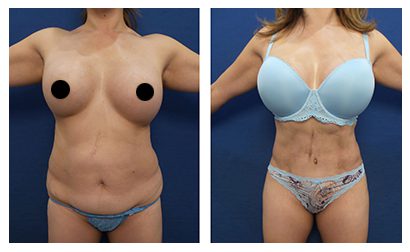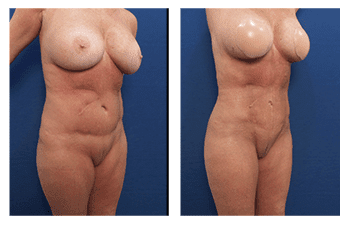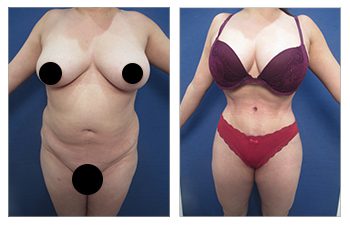Introduction: fatty upper pubic area
What is a FUPA? FUPA, or a Fatty Upper Pubic Area, is amongst the most commonly sought-after reasons for cosmetic surgery. As the acronym describes, a FUPA is a collection of adipose tissue, or put, fat, located between the hip bones in the pubic region.
Childbirth, aging, rapid weight loss, and genetics may contribute to the formation of a FUPA. FUPA can affect both males and females and is often a significant point of contention. In females, the FUPA often becomes more apparent after a Caesarean section. This is due to a low-set incision, commonly known as a Pfannenstiel incision, which anchors the skin and subcutaneous tissues down to the underlying muscle with scar tissue. This, in turn, creates a prominence of underlying fatty tissue in the pubic area. In males, this often happens simply due to the excess of fatty tissue in the pubic area. Either male or female, the FUPA sticks out of clothes and is quite unsightly for some.

FUPA Components
The common misconception is that the only issue at hand is fat, when in fact, a FUPA can involve excess fat, skin, or both! There are several non-surgical approaches to soften the overall appearance of the FUPA. These include riding, crunches, leg raises, rollups, superman pose, burpees, pelvic tilt, and classic Pilates moves, such as The Hundred- all of which address both the fat and skin.
One should not minimize the importance of a healthy lifestyle to lose lower abdominal fatty tissue! Create a cardio routine, be mindful of what you eat, and de-stress with yoga and meditation.
Surgical Correction of FUPA
The goal of surgical correction of the FUPA is to create a gentle rather than a prominent convexity. The key to modification of a FUPA is to prevent a striking appearance, such as a concavity. These goals are achieved by understanding whether the issue at hand is related to skin redundancy or excess fat.
Excess fat may be addressed with liposuction of the Fatty Upper Pubic Area, while redundant skin may be addressed with excision of the excess skin. In fact, loose skin can become a concern following FUPA skin excision is performed through a lower tummy tuck incision. An incision allows for resetting of the height of the pubic area, providing a pubic lift, and enhancing the overall appearance of the pubis.
Ideal pubic height ratios are based on the evaluation of supermodels; these distances extend from the inframammary crease to the belly button, the belly button to the upper groin, and the upper groin to the bottom of the genitals, as 44%, 38%, and 18% respectively.

Redefining FUPA: What It Is and Why It Occurs
The Fatty Upper Pubic Area, commonly known as FUPA, refers to excess fat over the area right between the hips and above the pubic bone. This condition, also known as a “panniculus,” can result from childbirth, aging, rapid weight loss, and genetics.
The Psychological Impact of FUPA
Beyond the physical aspect, FUPA can have significant psychological effects, impacting self-esteem and body image. Understanding its causes and treatment options is crucial for both physical and mental well-being.
The Causes Behind Fatty Upper Pubic Area
Genetics and Body Composition
Genetics plays a pivotal role in where fat is stored in the body, including the upper pubic area. Individual body composition significantly influences the likelihood and extent of FUPA.
Lifestyle Factors and Weight Fluctuations
Lifestyle choices, such as diet and exercise, and weight fluctuations, especially rapid weight loss or gain, are key contributors to the development of FUPA.
Non-Surgical Approaches to Managing Fatty Upper Pubic Area
The Role of Diet and Exercise
A balanced diet and regular exercise are the first lines of defense against FUPA. Targeted exercises, while they cannot spot-reduce fat, can strengthen and tone the lower abdominal muscles, contributing to a more defined appearance (Verywell Health).
The Importance of a Healthy Lifestyle
Maintaining a healthy lifestyle, including proper nutrition and regular physical activity, is essential in managing and preventing FUPA.
Surgical and Cosmetic Procedures
Liposuction and Other Surgical Options
For those seeking more immediate results, surgical options like liposuction can effectively reduce fat in the upper pubic area. These procedures should be considered after evaluating all risks and benefits.
Non-Invasive Treatments
Non-invasive treatments such as CoolSculpting and Laser Assisted Lipo offer alternatives to surgery, targeting and reducing fat cells in the FUPA area.

Psychological and Emotional Considerations
The Impact of FUPA on Self-Esteem
The presence of Fatty upper pubic area can significantly affect an individual’s self-esteem and body image. Addressing these psychological aspects is as important as treating the physical condition.
Seeking Professional Help
It’s important to consult with healthcare and mental health professionals to address both the physical and emotional aspects of Fatty Upper Pubic Area.
Conclusion: Fat upper pubic fat
Addressing FUPA requires a holistic approach that includes understanding its causes, exploring treatment options, and considering the psychological impact. Whether through lifestyle changes, surgical procedures, or a combination of both, it’s possible to manage and reduce a fatty upper pubic fat effectively.

